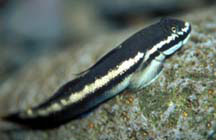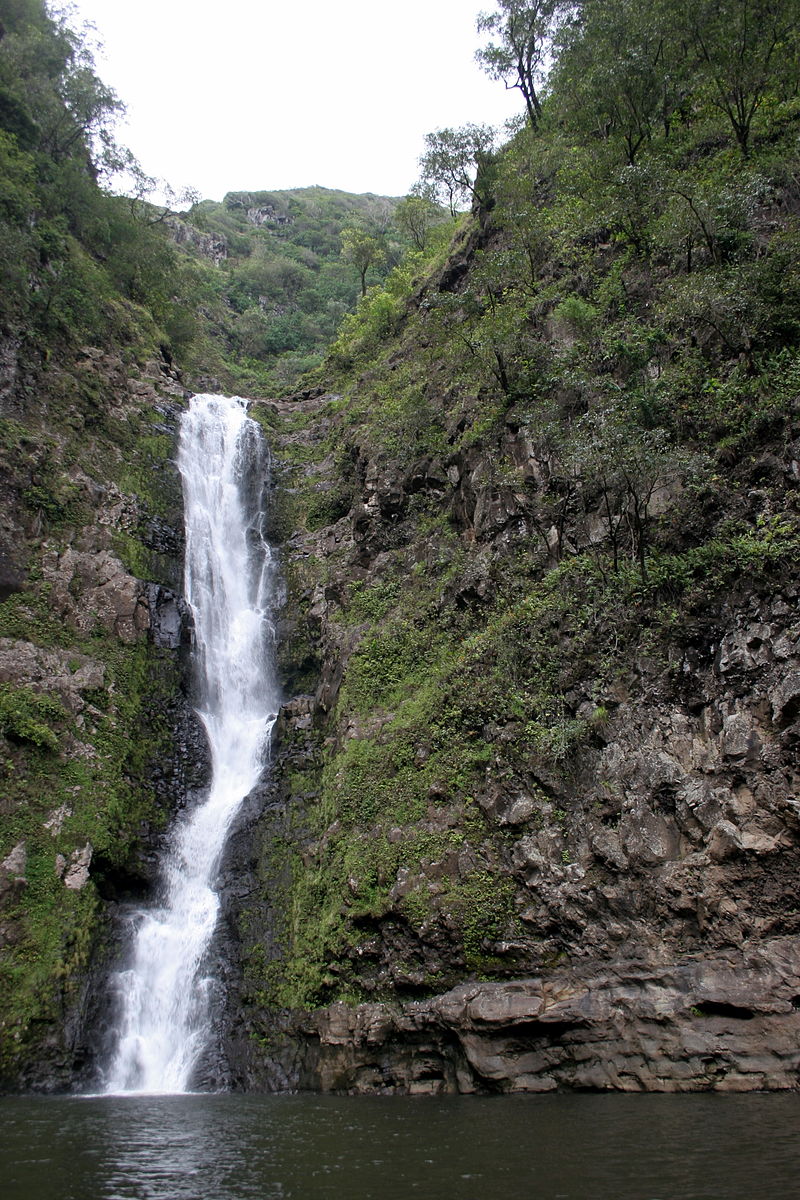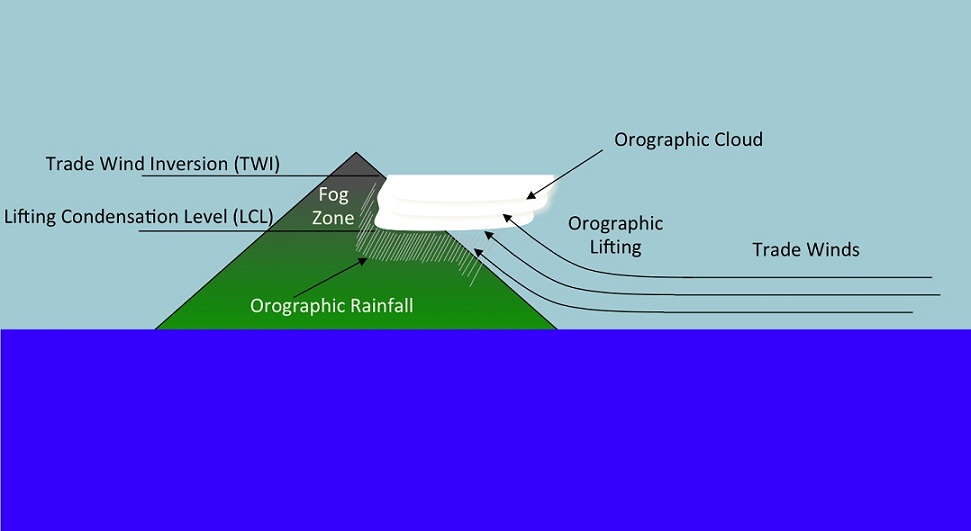Can Hawaii's waterfall-climbing fish survive when mountain rains change?
O'opu make extreme treks to breed that depend on stable climate conditions
Illustration by Allan Lasser
Here in Hawaii, not only are there rainbow sightings daily and dramatic mountain vistas obscured by clouds: we even have fish that can climb waterfalls. All these natural wonders are related to the way mountains influence rain patterns, and they could all be at risk thanks to human-induced climate changes.
The waterfall-climbing fish in Hawaii are called Oʻopu. Five species of Oʻopu live in Hawaii, but one, Oʻopu alamoʻo, are the best climbers. They're just a few inches long, hatch in high-altitude freshwater streams, and are washed downstream to the ocean. After three to six months, they swim back to the streams to breed, much like salmon. While both Oʻopu and salmon trek upstream, Oʻopu have a bigger challenge: the streams in Hawaii often have vertical rock faces. Luckily Oʻopu have grown pelvic fins that suction onto wet rock faces behind waterfalls, and they climb vertically upward, inch by inch. Oʻopu alamoʻo have been found as much as 422 feet up waterfalls.
Oʻopu are important to Hawaiian history and culture. The species has been both a source of food for and part of religious ceremonies by the native Hawaiians. Four of the five species of Oʻopu are found nowhere else in the world. They are also the only species of freshwater fish native to Hawaii.

Chasing waterfalls
But increasing human populations in Hawaii are threatening the Oʻopu stream habitat – and they need to be managed and studied to protect their livelihood.
Streams are sometimes rerouted or channeled to protect human property against flooding or for crop irrigation, both of which reduce streamflow.
Furthermore, Hawaii has seen an overall decline in rainfall over the last 30 years, and future projections show a continued decrease. The rock face needs to be wet for Oʻopu to climb, so the characteristics of the stream are important. The ideal stream conditions include steady flowing water over long time scales. Previous observation has suggested that the flash floods induced by heavy precipitation in Hawaiian streams could serve as a vital signal for larvae and juvenile Oʻopu in the coastal ocean to migrate back upstream. Flash floods may be OK for Oʻopu, but as you can imagine, droughts and dry rocks are not.
The fact that Oʻopu evolved to climb waterfalls tells us that the Hawaiian islands must have had steady precipitation patterns for hundreds of thousands, if not millions, of years. That type of skill doesn't appear overnight.
Most of the rain on the Hawaiian islands comes from a process called orographic precipitation. Orographic means "relating to mountains," so orographic precipitation is rain that is induced, or modified in some way, by the presence of a mountain. In the case of Hawaii, most of the orographic precipitation on the island comes from the incoming wind being lifted by the mountainous islands. This makes the mountains extremely important to the water cycle. To put this into context, the ocean area around the islands get an average of 25 inches of rain per year, while the mountains on the islands get up to 16 times that amount.
Of course, none of this would happen without clouds. They're composed of an uncountable number of tiny water droplets – so tiny that it takes about a million cloud droplets to make up a single raindrop.

Sticking to falls
Clouds form when air becomes saturated and can't hold any more water vapor. Reaching saturation usually involves a two-step process: first, air is lifted to a higher elevation where the air pressure is lower. Then, as the air pressure decreases, volume increases, so the air temperature drops. Just as dew forms on the outside of your cold lemonade on a hot summer day, cloud water condenses in the atmosphere as the air cools.
The mountainous terrain of the Hawaiian islands lifts air to saturation and forms clouds. The cloud droplets then collide together and collect each other to form rain drops, which fall onto the mountain tops, providing the water for the streams and waterfalls that Oʻopu climb. The process of orographic precipitation on the islands is reliable and continuous, day and night, summer and winter, and year after year.

Giambelluca, T.W., Q. Chen, A.G. Frazier, J.P. Price, Y.-L. Chen, P.-S. Chu, J.K. Eischeid, and D.M. Delparte
Still, orographic precipitation cannot be taken for granted. My research has shown that the complex cloud processes responsible for orographic precipitation over islands in the tropics are sensitive to the wind speed. This is important for Hawaiian rainfall, because the decrease in precipitation over the last 30 years has been tied to a decrease in the trade-wind strength. Furthermore, tiny particulates in the atmosphere called aerosols can also affect orographic precipitation. Aerosols are ubiquitous in the atmosphere, from both natural and human sources, and the impact of aerosols on clouds in the atmosphere is the cause of one of the largest uncertainties in future climate projections.
All of Earth's processes are related. Changes to Earth's climate affect the atmosphere, including processes which drive rainfall, which affect streamflow, which affects stream species and their habitats. All of these shifts demand our attention in order to ensure that O'opu will continue to thrive far into the future.
Peer Commentary
Feedback and follow-up from other members of our community
Jenny Howard
Ecology
Wake Forest University
I lived in Hawaii a couple of years ago but had NO IDEA these fish existed – so cool! Is each endemic species native to a different island or do all five species inhabit all the islands? I am really curious as to whether or not O'opu can breathe out of water as some fish, like the mangrove rivulus, can. If rain hasn't fallen in a while, but as long as the rock face is wet enough to climb, the O'opu will do OK? Would a conservation management strategy ever be to have volunteers artificially soaking rock cliff faces?